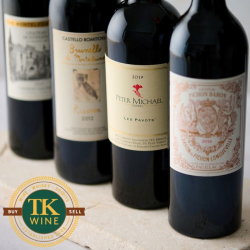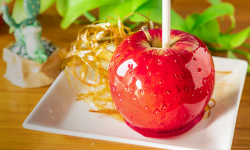Formato de listado
Cambio de listado
Mostrar mes de operación
Listar por Categoría
Regresar
2020/2/1 - 2020/2/1 / Torrance, California / Estación / Eventos

| Local | Seiwa Market Torrance 21815 Hawthorne Blvd., Torrance, CA 90503 |
|---|---|
| Dirección | Hawthorne Boulevard, Torrance, California, 90505 USA |
| Fecha | 2020/2/1 - 2020/2/1 |
| Tiempo | 12momento00minutos - 14momento30minutos |
- [Detalle Hora]
Setsubun-sai (FREE): 12 pm to 12:45 pm
Gokitō (by appointment only): 1 pm to 2:30 pm
- [Acceso]
Near Bus Stop
Torrance Transit Hawthorne Bl at Center Way Bus Stop
Torrance Transit Hawthorne Bl at Center Way Bus Stop
Torrance Transit Hawthorne Bl at Carson St Bus Stop
LA Metro Hawthorne / Carson Bus Stop
Torrance Transit Hawthorne Bl at Carson St Bus Stop
- [Detalle Lugar]
Setsubun-sai, Recharging Spirits, and Yakubarai
at the Seiwa Market in Torrance (FREE to attend!)
Seeking men and women who were born in the Year of the Rat to participate throwing beans in the ceremony.
- [Contacto]
- Gokito@shintoShrine.org
- [Registrante]アメリカ出世稲荷神社
- [Idioma]English
- Fecha registrada : 2020/01/16
- Fecha de Publicación : 2020/01/16
- Fecha de cambio : 2020/01/16
- Vista de Página. :
- "Guía de Ciudad" para encontrar Tiendas
-
- Miyako Hotels&Resorts, una cadena hotele...

-
El Metropolitan Hybrid Hotel ・ Torrance está situado a medio camino entre Los Ángeles (Norte ) y Orange County ( Sur )). La costa está a 5 km de distancia. Está aproximadamente a 25 minutos del centro...
+1 (310) 320-6700Miyako Hybrid Hotel
-
- Tokio ・ Clínica afiliada Kato Ladies Cli...

-
Una clínica especializada en el tratamiento de la infertilidad con un enfoque único. "Quiero tener un hijo con el menor estrés posible para mi cuerpo y sin rodeos": esto debe ser lo que piensa cuando ...
+1 (949) 788-1133Life IVF Center
-
- Tanaka Tanaka Honke, uno de los comercia...

-
La finca de Tanaka Honke ocupa una superficie aproximada de 3.000 tsubos (unos 4.000 m2) y está rodeada de 20 almacenes en una magnífica zona de 100 m cuadrados. El jardín japonés, que cambia con las ...
+81-26-248-8008豪商の館 田中本家博物館
-
- La marca segura y fiable JA Funeral Serv...

-
JA Funeral Service ofrece funerales seguros con todo su conocimiento y sinceridad. Funerales directos ・ Cremaciones ・ Funerales familiares ・ Funerales secretos ・ Funerales de un día ・ Funerales genera...
+81-439-70-2011JAライフちば
-
- Somos un grupo de coro con sede en Westc...

-
Las mujeres japonesas que viven permanentemente ・ en la ciudad de Nueva York ! La práctica es todos los miércoles a las 10 ~ 12 del mediodía en la iglesia en Scarsdale.
女声コーラスグループ 花みずき
-
- Salón con personal japonés experimentado...

-
Técnicas de corte de pelo altamente reproducibles & El estilista MASATO, que tiene fama por su facilidad de peinado, y la manicurista ATSUKO, que es popular no sólo por el diseño de uñas sino también ...
+1 (408) 430-3004J Flow Hair and Nail
-
- Kisarazu's best cram school for improvin...

-
Independent Learning Feed, situada en Kisarazu, Chiba, enseña a los estudiantes de las escuelas primarias ・ y a los estudiantes de las escuelas secundarias ・ "aprendizaje independiente", lo que hace q...
+81-438-23-6633自立ラーニング FEED
-
- Instalación de aires acondicionados, pre...

-
Trabajamos con aires acondicionados Daikin, Mitsubishi y Fujitsu. Presupuestos gratuitos. Podemos responder en japonés, así que no dude en ponerse en contacto con nosotros. Podemos tratar tanto con em...
+1 (808) 489-4538C.S.Mechanical, Inc.
-
- Cuidado de niños en japonés e inglés. Fo...

-
Fomentamos el espíritu de contacto con la naturaleza y el respeto por los objetos y los seres vivos a través del cuidado diario de los niños. Guiamos a los niños para que miren, escuchen, toquen, obse...
+1 (310) 325-8536Education Link Bilingual pre-school
-
- BAYSIDE KANAYA, un complejo turístico co...

-
Glamuroso + Cottage = BAYSIDE KANAYA, donde podrá experimentar un nuevo tipo de alojamiento, el 'Grand Cottage', donde todas las habitaciones tienen vistas al mar y podrá disfrutar de la puesta de sol...
+81-439-27-1415BAYSIDE KANAYA ベイサイド金谷
-
- Tienda en línea especializada en la comp...

-
Si usted quiere comprar alcohol, dejarlo a TK Wine ! Rare alcohol comprado desde el país y el extranjero se actualiza constantemente en el sitio web. Vinos que sólo encontrará en TK Wine ・ Disfrute ...
+1 (310) 926-4951TK Wine
-
- Traslados al aeropuerto, inspecciones ・ ...

-
SUVs, furgonetas Sprinter y otros vehículos pueden ser seleccionados para adaptarse mejor al número de pasajeros y el propósito de uso. Traslados al aeropuerto Para traslados al aeropuerto para via...
+1 (800) 794-0994AM World Express
-
- Vendemos manzanas de caramelo que son co...

-
Las manzanas de caramelo de Candy Cort, a menudo vistas en festivales, vienen en muchas variedades, incluyendo las cubiertas de chocolate y el caramelo de manzana azul, que tiene un impacto visual aso...
candy cort(キャンディコート)
-
- Compra y venta de inmuebles comerciales ...

-
Si usted está buscando una propiedad en los EE.UU., APOGEE es el lugar para usted. Conectado al mayor sistema de búsqueda en los EE.UU., APOGEE le presentará la mejor propiedad para usted, teniendo en...
+1 (310) 801-6412APOGEE商業不動産 ロサンゼルス
-
- Es un gran supermercado japonés de Fremo...

-
Osaka Market Place ofrece marisco fresco ( sushi ・ sashimi ) ・ carne local ・ comidas con calidad de restaurante ・ una amplia gama de comida japonesa ・ licores japoneses ・ cosméticos ・ artículos eléctr...
+1 (510) 399-4832Osaka Marketplace





After the ceremony, we will provide Setsubun no Harai and gokitō such as yakubarai for yakudoshi (critical year) services.
We also distribute ehōmaki (lucky sushi roll) made by our blessed rice, which is our collaboration with Koda Farms. (Ehōmaki will be limited 30 pieces.)
Let’s pass along Japanese tradition, culture and customs to the next generation!
Men and Women of the Year of the Rat
We are looking for two men and women who were born in the Year of the Rat. They will participate in the throwing beans ceremony with the Shinto priest and assist distributing beans after the ceremony. We friendly request to donate ohatsuhorō as a participating fee.
About Setsubun
The original meaning of Setsubun is “dividing season,” and the beginning of each of the four seasons was called Setsubun. However, the day before the first day of spring in the lunar calendar is New Year’s Eve, and as it marks the seasonal change from harsh winter to spring, it came to be considered an especially important day. During the Edo period, Setsubun came to exclusively mean the day before the first day of spring. This year, the first day of spring is actually February 4th, making Setsubun February 3rd, but we will hold Setsubun-sai on February 1st due to venue availability. We will hold this Setsubun ceremony to show respect and appreciation and present our wishes to the nature spirits. This ceremony is free to attend.
About Setsubun-no-harai
This is a very traditional ritual service that has been passed from generation to generation for many years in Shusse Inari Shrine. This ritual is centered around the use of hitogata. From ancient times, the Japanese people have prayed for purification, and to be rid of the previous year’s kegare. New Year’s rituals are for cleansing and refreshing of energy for their spirit. Kegare is often translated as “withered spirit.” Over the course of the year, the energy of a person’s spirit is diminished by tiredness, stress, and other pressures, so New Year’s rituals are performed to cleanse and refresh this energy and recharge the spirit.
We will distribute hitogata at the Setsubun-sai venue, so please let us know if you are interested in this service. Please reference our flyer for more detail about hitogata.
Note: Attendance of this ritual service is not required.
About yakudoshi (Females ages: 18, 32, 36 / Males ages: 24, 41, 60)
Over the many years of a person’s life, many changes may take place in their body and/or environment. As a result, it is said there is a risk of meeting with misfortune. Years in which there is an increased chance of misfortune are called yakudoshi, meaning “Critical Years.” It is apparent from historical texts that yakudoshi already existed as a custom during the Heian Period in Japan (794 CE–1185 CE). However, yakudoshi are not the only years that one needs to take into account. In addition to the designated critical year (or hon-yaku), the year before a critical year (mae-yaku), and the year after (ato-yaku) also require careful attention in order to avoid misfortune. For this reason, it is necessary to think of yakudoshi as a three-year period. During this three-year period, people go to Shinto shrines in order to receive prayers from priests to ward off evil and to cleanse themselves of its influence. People also pray to purify their bad luck and for good luck charms to bring about better fortune. If you wish to hold a yakubarai gokitō, please make an appointment beforehand. The length of gokitō is approximately 15 minutes.